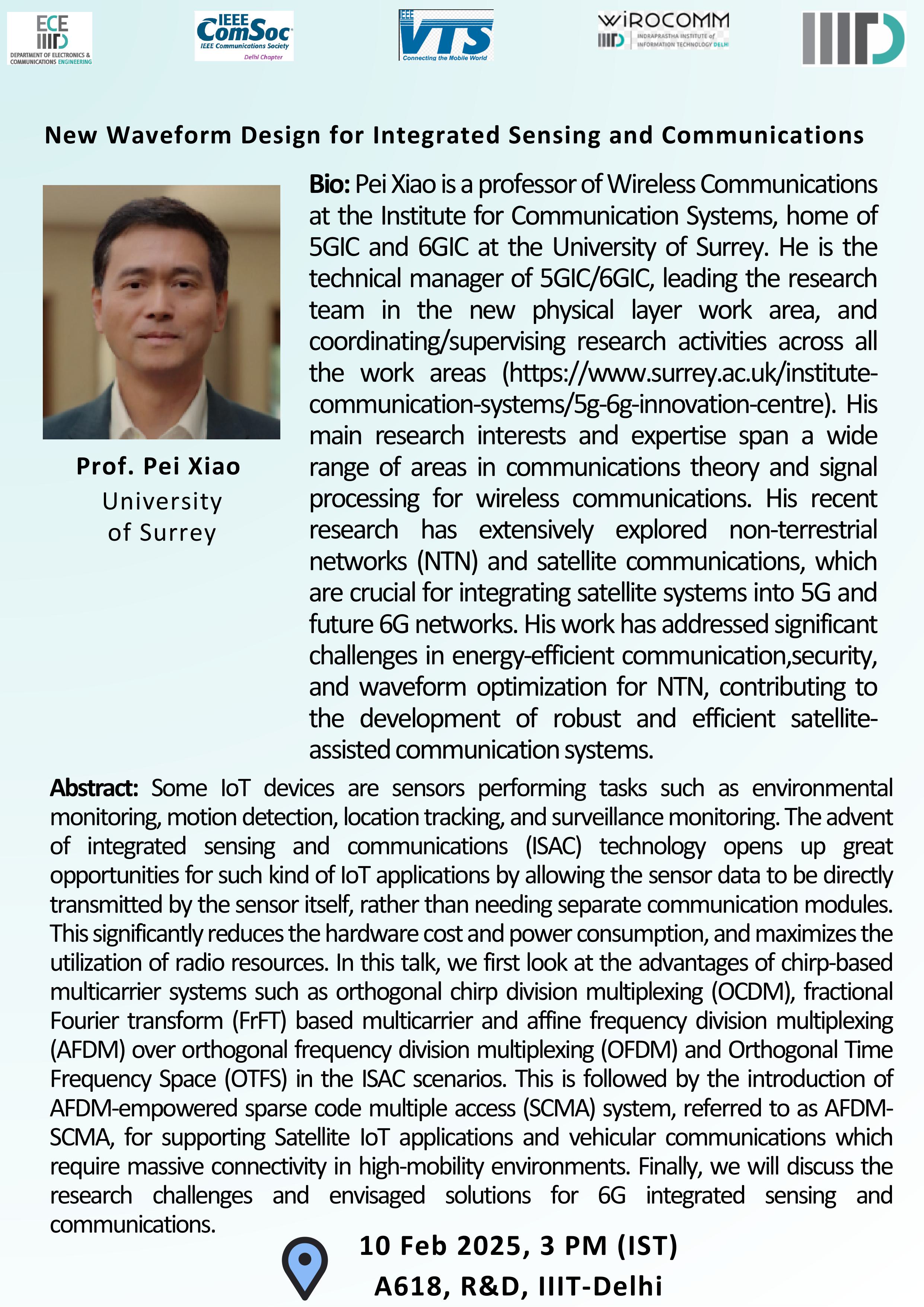New Waveform Design for Integrated Sensing and Communications
Some IoT devices are sensors performing tasks such as environmental monitoring, motion detection, location tracking, and surveillance monitoring. The advent of integrated sensing and communications (ISAC) technology opens up great opportunities for such kind of IoT applications by allowing the sensor data to be directly transmitted by the sensor itself, rather than needing separate communication modules. This significantly reduces the hardware cost and power consumption, and maximizes the utilization of radio resources. In this talk, we first look at the advantages of chirp-based multicarrier systems such as orthogonal chirp division multiplexing (OCDM), fractional Fourier transform (FrFT) based multicarrier and affine frequency division multiplexing (AFDM) over orthogonal frequency division multiplexing (OFDM) and Orthogonal Time Frequency Space (OTFS) in the ISAC scenarios. This is followed by the introduction of AFDM-empowered sparse code multiple access (SCMA) system, referred to as AFDM-SCMA, for supporting Satellite IoT applications and vehicular communications which require massive connectivity in high-mobility environments. Finally, we will discuss the research challenges and envisaged solutions for 6G integrated sensing and communications.
Date and Time
Location
Hosts
Registration
Speakers
Prof. Pei Xiao
New Waveform Design for Integrated Sensing and Communications
Some IoT devices are sensors performing tasks such as environmental monitoring, motion detection, location tracking, and surveillance monitoring. The advent of integrated sensing and communications (ISAC) technology opens up great opportunities for such kind of IoT applications by allowing the sensor data to be directly transmitted by the sensor itself, rather than needing separate communication modules. This significantly reduces the hardware cost and power consumption, and maximizes the utilization of radio resources. In this talk, we first look at the advantages of chirp-based multicarrier systems such as orthogonal chirp division multiplexing (OCDM), fractional Fourier transform (FrFT) based multicarrier and affine frequency division multiplexing (AFDM) over orthogonal frequency division multiplexing (OFDM) and Orthogonal Time Frequency Space (OTFS) in the ISAC scenarios. This is followed by the introduction of AFDM-empowered sparse code multiple access (SCMA) system, referred to as AFDM-SCMA, for supporting Satellite IoT applications and vehicular communications which require massive connectivity in high-mobility environments. Finally, we will discuss the research challenges and envisaged solutions for 6G integrated sensing and communications.
Biography:
Pei Xiao is a professor of Wireless Communications at the Institute for Communication Systems, home of 5GIC and 6GIC at the University of Surrey. He is the technical manager of 5GIC/6GIC, leading the research team in the new physical layer work area and coordinating/supervising research activities across all work areas (https://www.surrey.ac.uk/institute-communication-systems/5g-6g-innovation-centre). His main research interests and expertise span a wide range of areas in communications theory and signal processing for wireless communications. His recent research has extensively explored non-terrestrial networks (NTN) and satellite communications, which are crucial for integrating satellite systems into 5G and future 6G networks. His work has addressed significant challenges in energy-efficient communication, security, and waveform optimization for NTN, contributing to the development of robust and efficient satellite-assisted communication systems."


 Add Event to Calendar
Add Event to Calendar
